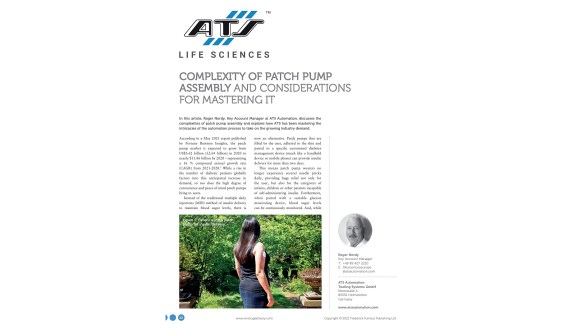
In this article, Roger Nordy, Key Account Manager at ATS Automation, discusses the complexities of patch pump assembly and explains how ATS has been mastering the intricacies of the automation process to take on the growing industry demand.
According to a May 2021 report published by Fortune Business Insights, the patch pump market is expected to grow from US$3.62 billion (£2.64 billion) in 2020 to nearly $11.86 billion by 2028 – representing a 16% compound annual growth rate (CAGR) from 2021-2028. While a rise in the number of diabetic patients globally factors into this anticipated increase in demand, so too does the high degree of convenience and peace of mind patch pumps bring to users.
Instead of the traditional multiple daily injections (MDI) method of insulin delivery to maintain blood sugar levels, there is now an alternative. Patch pumps that are filled by the user, adhered to the skin and paired to a specific customised diabetes management device (much like a handheld device or mobile phone) can provide insulin delivery for more than two days. This means patch pump wearers no longer experience several needle pricks daily, providing huge relief not only for the user, but also for the caregivers of infants, children or other patients incapable of self-administering insulin. Furthermore, when paired with a suitable glucose monitoring device, blood sugar levels can be continuously monitored.


 Contact Us
Contact Us  Subscribe
Subscribe  LinkedIn
LinkedIn  Youtube
Youtube